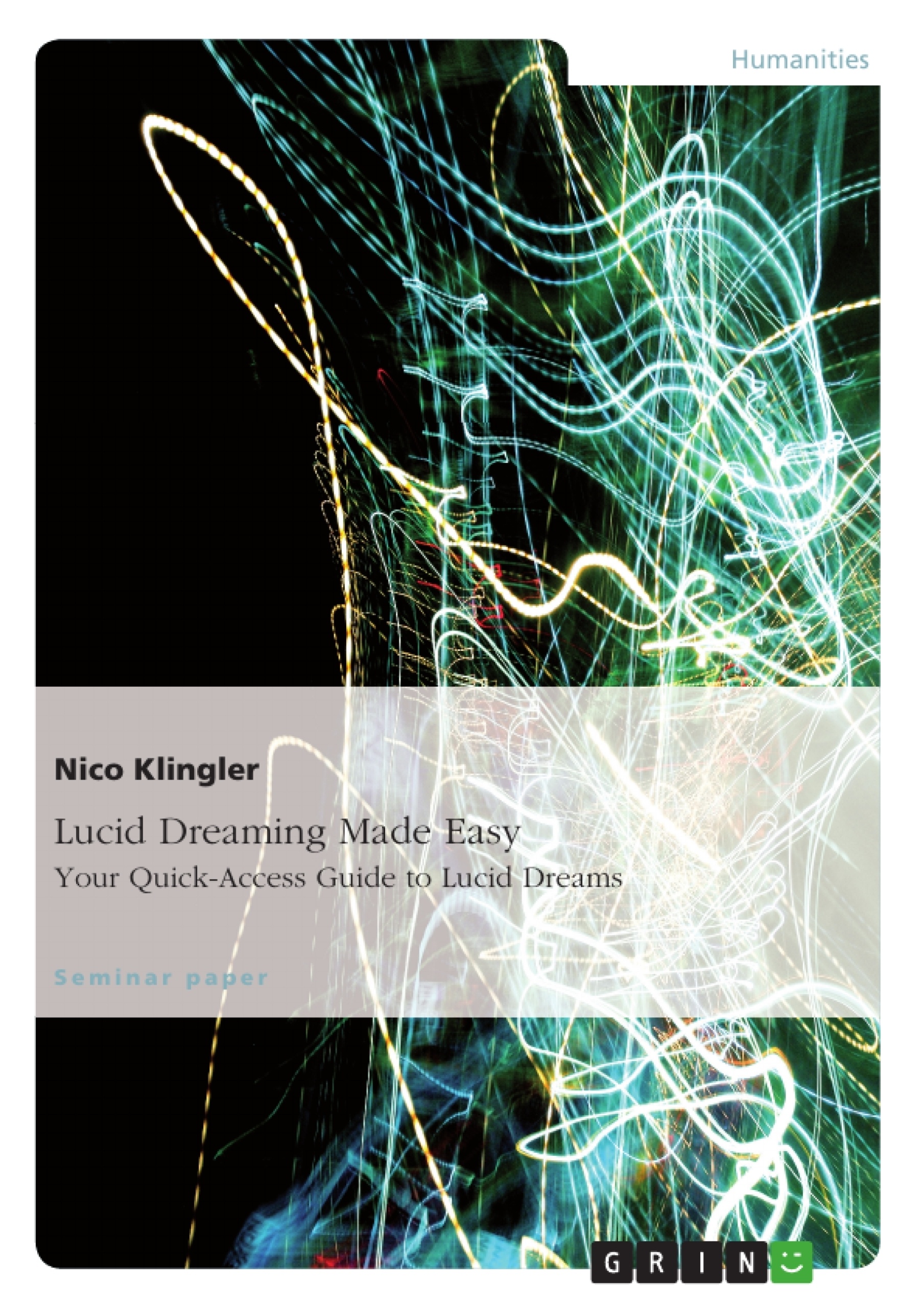Let us make a thought experiment: We assume that the average life span of a citizen is around eighty years. A day lasts 24 hours. We know the length of one's sleep per night and how many days there are in a year. A fact that is anything but a mystery emerges: we doze around somewhere between twenty and twenty-five years of our life!
In a dream there are no laws of physics, no rules. There is nothing impossible in a dream! The fascination induced by the idea of freedom that can be lived by one in a lucid dream led me to choosing this topic for my study. After prolonged thought on an adequate question for my study, I have decided in favor of the following question: Can people learn lucid dreaming?
To answer this question, I will proceed as follows: The first part of the study provides the necessary theory.This is systematically described under the topic ‘Lucid dream’.In the theory part you will find the foundations on sleep phases, dream activity, various types of dreams and dream content. Then, the topic of lucid dreams is explained precisely based on the definition given by Paul Tholey; the most important concepts will be made available to you in the lucid dream vocabulary section.
The second and practical part of the study consists of a lucid dream workshop, which should make practicing and mastering lucid dreams as accessible as possible. You will be presented various techniques and exercises that are designed to help you induce a lucid dream. For this study, the lucid dream workshop has been carried on by a test subject and tested by the author himself in a self-experiment, in order to verify the accessible character of the workshop. The full workshop is available to you in the Appendix
Table of Contents
- Introduction
- Theory
- Life
- The sleep
- The phases of sleep
- Sleep activity
- The dream
- The dream/night dream
- The daydream
- Two types of night dreams
- The dream content
- The lucid dream
- "Lucid and clear"
- Scientific evidence
- From theory to practice
- The lucid dream vocabulary
- Techniques
- Other concepts
- Practice
- Introduction
- The lucid dream workshop
- Thematic areas
- Lucid dream workshop: results
- Conclusions
- Impact
- Future perspective
- Final considerations
- Summary of the results in relation to the central question
- Personal opinion
Objectives and Key Themes
The primary objective of this study is to explore the possibility of learning lucid dreaming. The study aims to investigate if individuals can acquire the ability to become aware of their dreaming state and actively influence the content and direction of their dreams.
- The nature of sleep, dreaming, and lucid dreaming
- The different phases of sleep and dream activity
- The characteristics and potential benefits of lucid dreaming
- Practical techniques for inducing and controlling lucid dreams
- The results and implications of a lucid dream workshop experiment
Chapter Summaries
- Introduction: The chapter introduces the topic of lucid dreaming and presents the central question of the study: Can people learn lucid dreaming? It highlights the significance of dreams and the potential for using them in a more meaningful way.
- Theory: This chapter provides a theoretical foundation for understanding lucid dreaming. It delves into the different phases of sleep, dream activity, and the various types of dreams. The chapter defines lucid dreaming and explores its scientific evidence and practical implications.
- Practice: This chapter focuses on practical techniques for inducing and controlling lucid dreams. It introduces the lucid dream workshop, a practical approach to learning lucid dreaming, and details the various techniques and exercises used in the workshop.
- Final considerations: This chapter summarizes the findings of the study, including the results of the lucid dream workshop experiment, and provides insights into the future potential of lucid dreaming.
Keywords
The key themes and concepts explored in this study include lucid dreaming, dream control, sleep stages, dream activity, dream content, lucid dream techniques, workshop results, and personal experiences.
- Quote paper
- Nico Klingler (Author), 2011, Lucid Dreaming Made Easy. Your Quick-Access Guide to Lucid Dreams, Munich, GRIN Verlag, https://www.grin.com/document/305610




